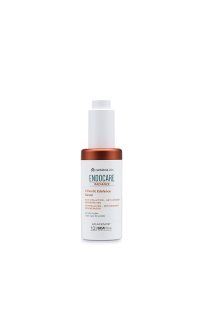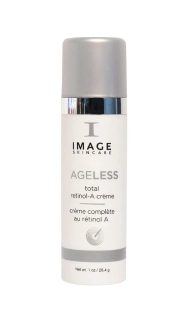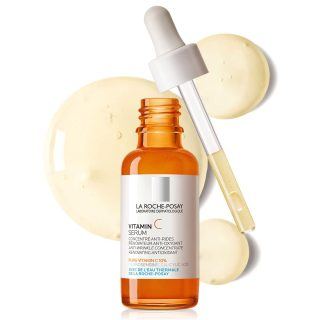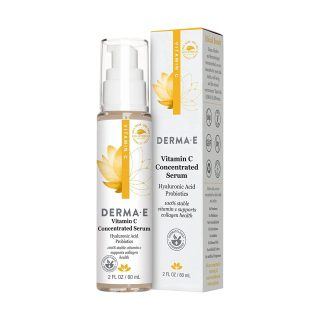Whether you are new to skincare or want to take your routine to the next level, it’s important to know how the ingredients work together in order for your skincare to be effective.
Without proper knowledge of how ingredients work, and how they can be paired, you run the risk of wasting your money. More importantly, however, you may also experience skincare disasters. I highlight which ingredients we should pair together for the best results, and the ones we should approach with caution.
Mixing Skincare Ingredients
Winning combinations
1. Retinoids + Peptides
Retinol is one of the most popular ingredients that people like to include in their routine. It is a chemical derivative of vitamin A that boosts skin-cell turnover and collagen stimulation, while peptides are small-chain amino acids that help build collagen and elastin. While they work wonders on their own, when combined in a nightly routine, they create a recipe for skin that looks and feels smoother and firmer.
My product recommendations:
IMAGE AGELESS total retinol- A crème
2. Retinoids + Hyaluronic Acid
Retinol can be drying, so the golden rule of using a vitamin A product is that it should always be followed up with a big hit of moisture, and what better way to do that than with hyaluronic acid?
Thanks to its miraculous capacity to hold water, the naturally occurring humectant works to draw in and lock in moisture. It is the best ingredient for counteracting any dryness that may be experienced.
My product recommendations:
3. Vitamin C + Vitamin E
Although they have their own claims to fame, vitamin C is especially known for its brightening benefits, while vitamin E is loved for its soothing and skin-conditioning properties. Both of these vitamins are potent antioxidants that help prevent and repair environmental damage to the skin.
That being said, it makes sense that when combined, they become even more powerful at protecting the skin from free radicals and reducing signs of aging. But that’s not the only reason they work well together. Vitamin E becomes inactive when they protect the skin from free radicals, but when combined with vitamin C there is a synergistic activation of vitamin E so that it can carry on acting as an antioxidant.
My product recommendations:
LA ROCHE-POSAY Pure Vitamin C10
4. Vitamin C + Ferulic Acid
Similarly, you can boost the effects of vitamin C even further by looking for a product that contains ferulic acid. Like vitamins C and E, ferulic acid is also a powerful antioxidant. Its main benefits include decreasing fine lines and wrinkles, brown spots, and other signs of premature aging, as well as increasing the effectiveness of other antioxidants.
My product recommendations:
 ENDOCARE Radiance C Ferulic Edafence Serum
ENDOCARE Radiance C Ferulic Edafence Serum
5. Glycolic Acid + Salicylic Acid
One of the best skincare combinations to look for is a mix of AHAs and BHAs, or more specifically, a mix of glycolic and salicylic acids. This is because, when combined, these two acids become an exfoliating powerhouse.
Glycolic acid loosens the top layer of the skin, allowing salicylic acid to deeply penetrate and clean out pores. And while these acids are well-loved on their own, they work better together, especially if you have oily or acne-prone skin.
My product recommendations:
6. All of the Above + SPF
It goes without saying that sunscreen should be stable in the morning skincare routine.
A broad-spectrum SPF 30+ should be applied religiously every day of the year, not only to prevent skin cancers, wrinkles, and sunspots, but because exfoliation from many other ingredients we apply to our skin, including retinol, vitamin C and acids, can increase the likelihood of sun sensitivity.
Tricky pairings
1. Retinoids + vitamin C
Retinol and vitamin C are hot topics in the skincare industry, and for good reason; these two ingredients are both effective anti-agers, but they work in diverse ways in your skincare routine.
Retinol speeds up cell turnover, helping to enhance collagen production, which encourages skin smoothing. Vitamin C, on the other hand, keeps skin strong and resilient with its antioxidant powers.
While there are benefits to incorporating both into your routine, I caution my patients against layering retinol and vitamin C if they have sensitive or extremely dry skin. You run the risk of your skin becoming irritated, especially with acidic forms of vitamin C like ascorbic acid.
This pairing does not hold true for all ingredient types of retinol and vitamin C. Retinol esters like hydroxypinacolone retinoate and lipid-soluble vitamin C’s, like ascorbyl tetraisopalmitate, dramatically reduce the chance of skin sensitivity and can be perfect pairings even for sensitive skin types.
My product recommendations:
DERCA Vitamin C Dermal Concentrate
2. Retinoids + AHAs/BHAs
It is recommended that if you suffer from sensitive or extremely dry skin, stay away from mixing retinoids with acid products like AHAs and BHAs. This is because using both a chemical exfoliant and retinol can lead to increased irritation and dryness.
If you do suffer from sensitive skin and want to use both, I suggest exfoliating in the morning and using the retinoid at night. However, if your skin is not sensitive or dry, using this combo can provide added skin benefits as the AHA/BHA allows deeper penetration of the retinol.
3. Vitamin C + AHAs/BHAs
The same cautions as above apply to combining vitamin C with exfoliating acids like salicylic, lactic, and glycolic acids. Again, for sensitive and dry skin sufferers, I recommend using one at a time or alternating the days you use them. And similarly, if your skin is not sensitive or dry, using this combo can provide added skin benefits as the AHA/BHA allows deeper penetration of vitamin C.
Takeaway
Skin irritation is also a factor that you should consider when pairing products. The wrong combination could lead to you over-drying, over-exfoliating, or irritating the skin. I like to tell my patients that more is not always better, the key is to simplify your skincare routine.






![women [longevity live]](https://longevitylive.com/wp-content/uploads/2020/01/photo-of-women-walking-down-the-street-1116984-100x100.jpg)










